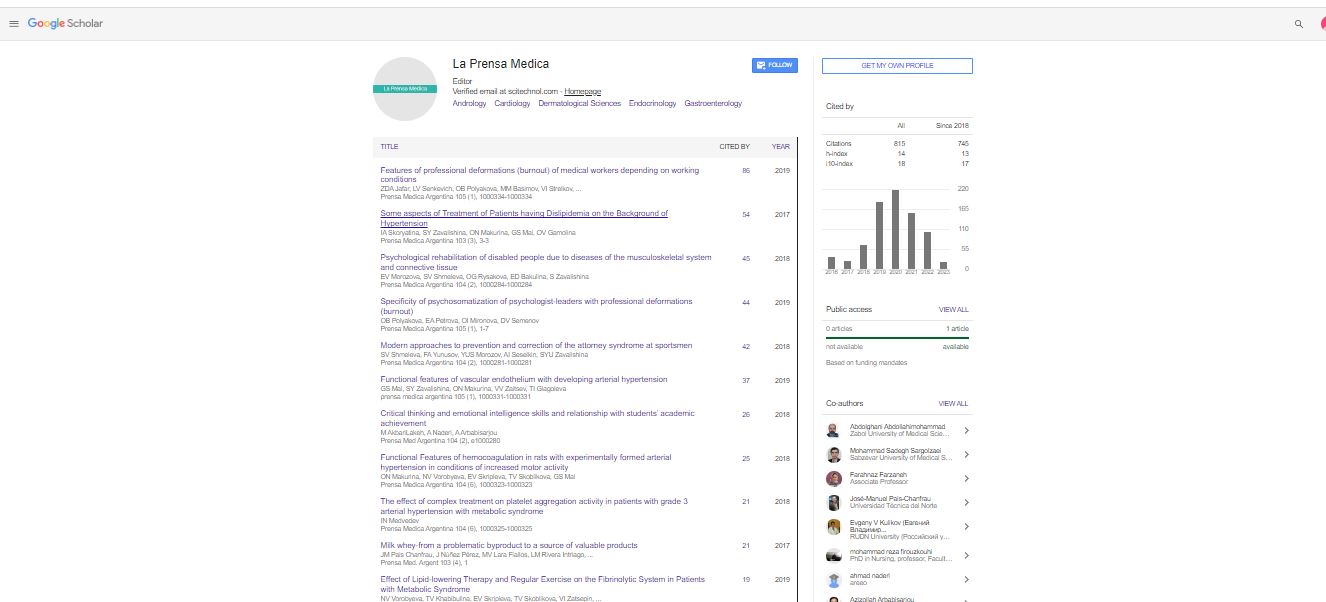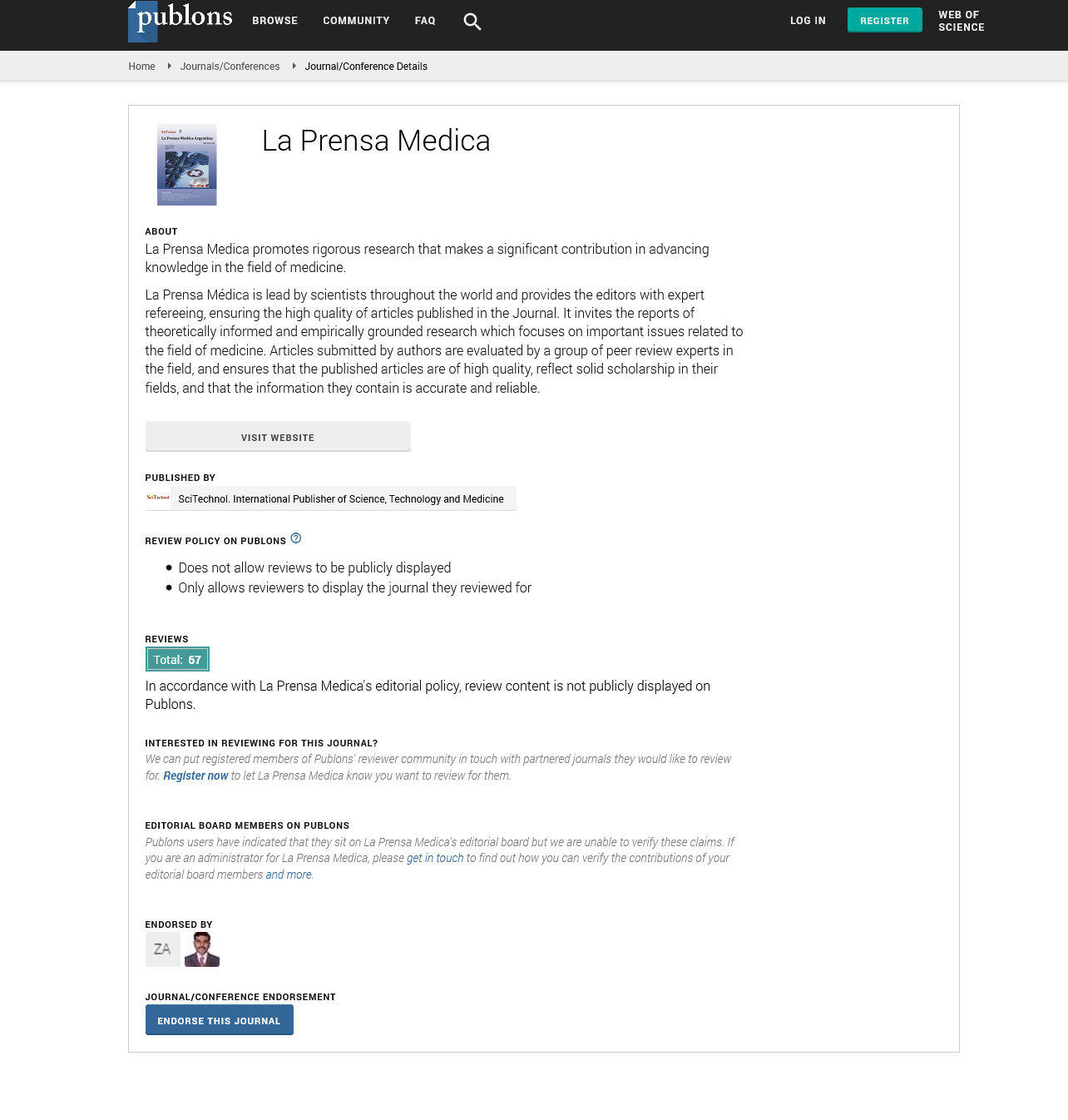Opinion Article, La Prensa Medica Vol: 109 Issue: 1
Patient-Specific Approaches to Manage Tachyphylaxis in Penicillin Therapy
Javier De Sanmartin*
1Department of Internal Medicine, Quirónsalud Madrid University Hospital,Madrid, Spain
*Corresponding Author: Javier De Sanmartin,
Department of Internal Medicine,
Quirónsalud Madrid University Hospital,Madrid, Spain
E-mail: jspk@uom.ac.mu
Received date: 28 March, 2023, Manuscript No. LPMA-23-100500
Editor assigned date: 31 March, 2023, PreQC No. LPMA-23-100500 (PQ);
Reviewed date: 14 April, 2023, QC No. LPMA-23-100500;
Revised date: 21 April, 2023, Manuscript No. LPMA-23-100500 (R);
Published date: 28 April, 2023, DOI: 10.4172/0032-745X.1000154
Citation: Sanmartin JD (2023) Patient-Specific Approaches to Manage Tachyphylaxis in Penicillin Therapy. La Prensa Medica 109:1.
Abstract
Description
Tachyphylaxis is a phenomenon characterized by a rapid decrease in response to a drug with repeated administration. It can occur due to various mechanisms and has implications for patient treatment, requiring higher drug doses to achieve the same effect. Understanding the mechanisms behind tachyphylaxis and its impact on treatment is important for healthcare providers to optimize therapeutic outcomes and minimize the risks associated with increased drug dosages. Further research is needed to discuss preventive strategies and identify biomarkers that can predict the development of tachyphylaxis, enabling personalized and more effective treatment approaches. Tachyphylaxis, the rapid development of reduced responsiveness to a medication after repeated doses, poses a challenge in the treatment of various conditions, including penicillin therapy.
Patient-specific approaches are vital in managing tachyphylaxis, as individual factors can influence the occurrence and severity of this phenomenon. This study aimed to discuss patient-specific strategies for effectively managing tachyphylaxis in penicillin therapy. One of the key patient-specific approaches is dose individualization based on factors such as body weight, renal function, and the severity of the infection. Adjusting the dose of penicillin to meet the specific needs of each patient can help mitigate tachyphylaxis. Pharmacokinetic studies have shown that optimizing dosing regimens based on patient characteristics can improve drug exposure and enhance treatment outcomes. Combining penicillin with other antibiotics can be an effective patient-specific approach to manage tachyphylaxis.
The addition of a second antibiotic with a different mechanism of action can overcome resistance mechanisms and enhance the efficacy of penicillin therapy. This approach should be tailored to the specific infection and guided by susceptibility testing. The duration of penicillin therapy plays a vital role in managing tachyphylaxis. Prolonging the treatment duration beyond the standard course may be necessary in certain cases to ensure eradication of the infection.
Close monitoring of patient response and symptoms can help determine the appropriate duration of therapy, considering factors such as infection severity, site, and pathogen involved. Another patientspecific approach is the rotation of antibiotics within the same class. Switching to a different penicillin or penicillin-related antibiotic can help overcome tachyphylaxis and maintain the effectiveness of treatment. However, this strategy should be carefully implemented, taking into account individual patient factors, previous treatment history, and bacterial susceptibility profiles.
Enhancing the immune system can aid in managing tachyphylaxis and improving the response to penicillin therapy. Strategies such as optimizing nutrition, ensuring adequate rest, and addressing underlying immune deficiencies can contribute to better treatment outcomes. Collaborative management involving infectious disease specialists and immunologists may be beneficial in tailoring immune support interventions to individual patients. Implementing Therapeutic Drug Monitoring (TDM) can be a valuable patient-specific approach in managing tachyphylaxis. TDM involves measuring drug levels in the blood to ensure therapeutic concentrations and guide dose adjustments. TDM can help identify patients at risk of tachyphylaxis and aid in optimizing penicillin therapy by individualizing doses based on measured drug concentrations.
Patient-specific approaches are vital in effectively managing tachyphylaxis in penicillin therapy. Individualizing the dose, considering combination therapy, optimizing treatment duration, rotating antibiotics, supporting the immune system, and implementing therapeutic drug monitoring are strategies that can enhance treatment outcomes. It is essential to consider patient-specific factors and collaborate with healthcare professionals to tailor interventions for optimal management of tachyphylaxis in penicillin therapy. Further research and clinical trials are warranted to validate the efficacy and safety of these patient-specific approaches.
 Spanish
Spanish  Chinese
Chinese  Russian
Russian  German
German  French
French  Japanese
Japanese  Portuguese
Portuguese  Hindi
Hindi 

